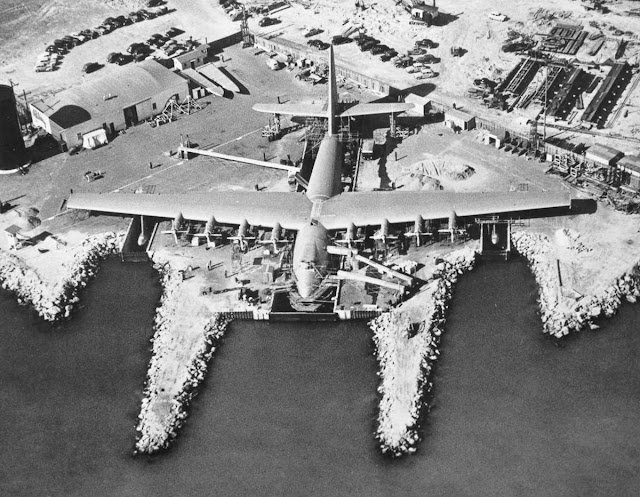On This Date In History
On November 2, 1777, the USS Ranger, with a crew of 140 men under the command of John Paul Jones, leaves Portsmouth, New Hampshire, for the naval port at Brest, France, where it will stop before heading toward the Irish Sea to begin raids on British warships. This was the first mission of its kind during the Revolutionary War.
Commander Jones, remembered as one of the most daring and successful naval commanders of the American Revolution, was born in Scotland, on July 6, 1747. He became an apprentice to a merchant at 13 and soon went to sea, traveling first to the West Indies and then to North America as a young man. In Virginia at the onset of the American Revolution, Jones sided with the Patriots and received a commission as a first lieutenant in the Continental Navy on December 7, 1775.
After departing Brest, Jones successfully executed raids on two forts in England’s Whitehaven Harbor, despite a disgruntled crew more interested in “gain than honor.” Jones then continued to his home territory of Kirkcudbright Bay, Scotland, where he intended to abduct the earl of Selkirk and then exchange him for American sailors held captive by Britain. Although he did not find the earl at home, Jones’ crew was able to steal all his silver, including his wife’s teapot, still containing her breakfast tea. From Scotland, Jones sailed across the Irish Sea to Carrickfergus, where the Ranger captured the HMS Drake after delivering fatal wounds to the British ship’s captain and lieutenant.
In September 1779, Jones fought one of the fiercest battles in naval history when he led the USS Bonhomme Richard frigate, named for Benjamin Franklin, in an engagement with the 50-gun British warship HMS Serapis. After the Bonhomme Richard was struck, it began taking on water and caught fire. When the British captain of the Serapis ordered Jones to surrender, he famously replied, “I have not yet begun to fight!” A few hours later, the captain and crew of the Serapis admitted defeat and Jones took command of the British ship.
One of the greatest naval commanders in history, Jones is remembered as a “Father of the American Navy,” along with fellow Revolutionary War hero Commodore John Barry. John Paul Jones is buried in a crypt at the U.S. Naval Academy Chapel in Annapolis, Maryland.
Crypt of John Paul Jones at US Naval Academy - Annapolis MD
On November 2, 1947, The Hughes Flying Boat, at one time the largest aircraft ever built, is piloted by designer Howard Hughes on its first and only flight. Built with laminated birch and spruce (hence the nickname the Spruce Goose) the massive wooden aircraft had a wingspan longer than a football field and was designed to carry more than 700 men to battle.
Howard Hughes was a successful Hollywood movie producer when he founded the Hughes Aircraft Company in 1932. He personally tested cutting-edge aircraft of his own design and in 1937 broke the transcontinental flight-time record. In 1938, he flew around the world in a record three days, 19 hours, and 14 minutes.
Following the U.S. entrance into World War II in 1941, the U.S. government commissioned the Hughes Aircraft Company to build a large flying boat capable of carrying men and materials over long distances. The concept for what would become the “Spruce Goose” was originally conceived by the industrialist Henry Kaiser, but Kaiser dropped out of the project early, leaving Hughes and his small team to make the H-4 a reality. Because of wartime restrictions on steel, Hughes decided to build his aircraft out of wood laminated with plastic and covered with fabric. Although it was constructed mainly of birch, the use of spruce (along with its white-gray color) would later earn the aircraft the nickname Spruce Goose. It had a wingspan of 320 feet and was powered by eight giant propeller engines.
Development of the Spruce Goose cost a phenomenal $23 million and took so long that the war had ended by the time of its completion in 1946. The aircraft had many detractors, and Congress demanded that Hughes prove the plane airworthy. On November 2, 1947, Hughes obliged, taking the H-4 prototype out into Long Beach Harbor, CA for an unannounced flight test. Thousands of onlookers had come to watch the aircraft taxi on the water and were surprised when Hughes lifted his wooden behemoth 70 feet above the water and flew for a mile before landing.
Despite its successful maiden flight, the Spruce Goose never went into production, primarily because critics alleged that its wooden framework was insufficient to support its weight during long flights. Nevertheless, Howard Hughes, who became increasingly eccentric and withdrawn after 1950, refused to neglect what he saw as his greatest achievement in the aviation field. From 1947 until his death in 1976, he kept the Spruce Goose prototype ready for flight in an enormous, climate-controlled hangar at a cost of $1 million per year. Today, the Spruce Goose is housed at the Evergreen Aviation Museum in McMinnville, Oregon.
Preparing to move Hughes Hercules 'Spruce Goose' from Culver City Plant to Long Beach California
Flying on 11.2.1947. It flew 1 time for 26 seconds, 70 foot altitude, 135 MPH for approximately 1 mile.
The Spruce Goose, with Howard Hughes at the controls, takes to the air for its only flight in Los Angeles Harbor.















No comments:
Post a Comment